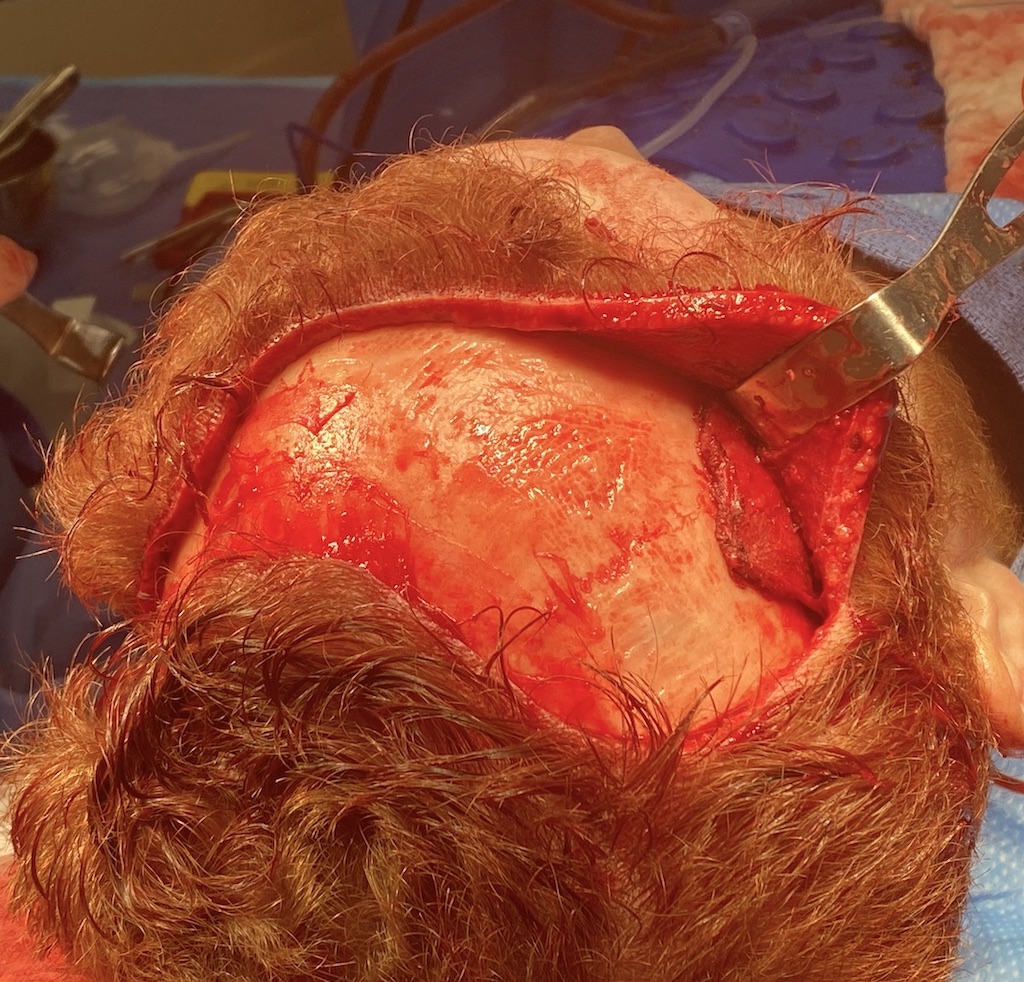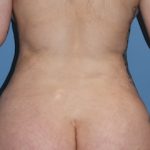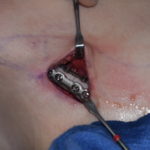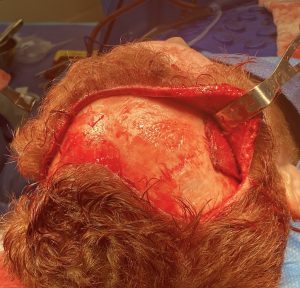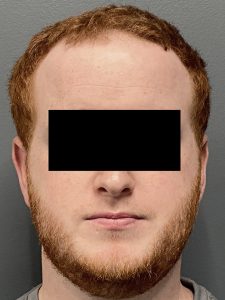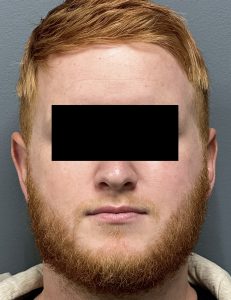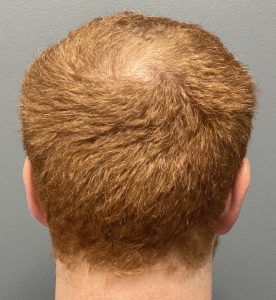Background: The wide or light bulb shaped head is caused by a combination of excessive bone and soft tissue. The temporal muscle makes up a significant part of the width of the head particularly at the anterior temporal area. (temporal fossa) It is disproportionately wide compared to the cheek and jaw bony widths below it. In moderate width cases the standard temporal reduction technique of muscle removal would be adequate. But when the bone is also a contributing factor the hidden postauricular incisional approach can not be used.
To perform combined bone and soft tissue reduction of the side of the head that also includes then forehead a more open scalp approach is needed. The well known coronal scalp incision always offers the best expire but the ear to ear incision, particularly in a male, can give one pause. A more ‘limited’ approach is the hemi-coronal scalp incision. This is a coronal-based scalp[ incision but it doesn’t go down as far as the ear. It stops in the upper temporal area and spares the most visible of the temporal area above the ear. This approach still allows good exposure for the needed skull reshaping maneuvers.
Case Study: This male desired to treat his wide head shape which also had a protruding forehead. Between the need to reduce the forehead and well as the anterior temporal area in addition to the posterior temporal area an open scalp incisional approach was used.
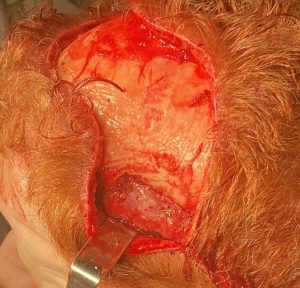
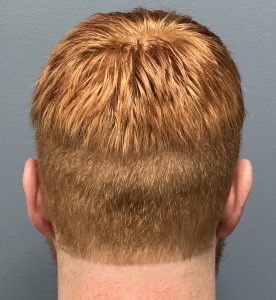
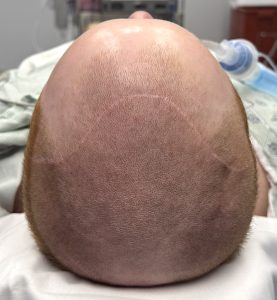
There are different types of head width reduction surgeries but,, by far, the most commonly performed is temporal reductions done through postauricular incisions. This is a scarless approach but its effects are limited to removal of the posterior temporal muscle some of the anterior temporal muscle but no bone removal is possible. Some limited temporal bone removal becomes possible with an extension of the incision further up onto the side of the head…but this creates a fine line scar that can certainly be visible on a shaved head or through short hair.
Maximal head narrowing requires an approach from above through an open scalp approach. It is not necessary to make the scalp incision all the way down to the ear. It can be restricted to the upper temporal area which keeps the scar away from the most visible part of the side of the head and up in a longer hair area for some men. As this patient’s scalp scar shows it can heal quite heal. BUT this was a no risk proposition in this patient as he knew he would be wearing a hair prosthesis after the surgery. For many potential patients, however, this is a luxury they may not have so the aesthetic tradeoff of the scalp scar must be considered very carefully.
Key Points
1) The most aggressive reduction of the wide head requires a combination of muscle and bone reduction.
2) A hemi-coronal scalp incision is needed for forehead and temporal reductions.
3) Resuspending reduced anterior temporal muscle can be effectively done using microscrews.
Dr. Barry Eppley
World-Renowned Plastic Surgeon

